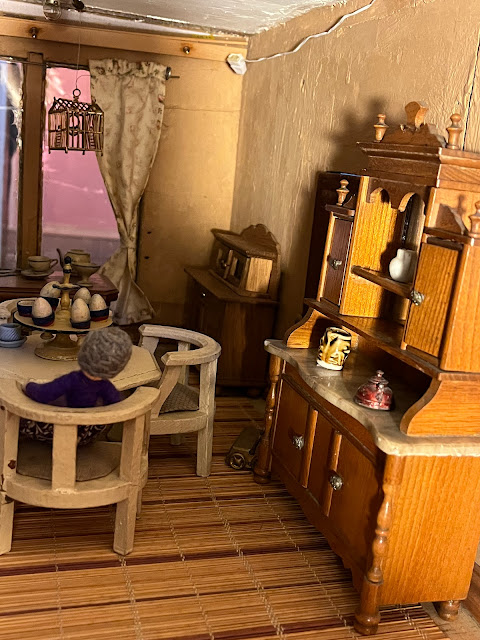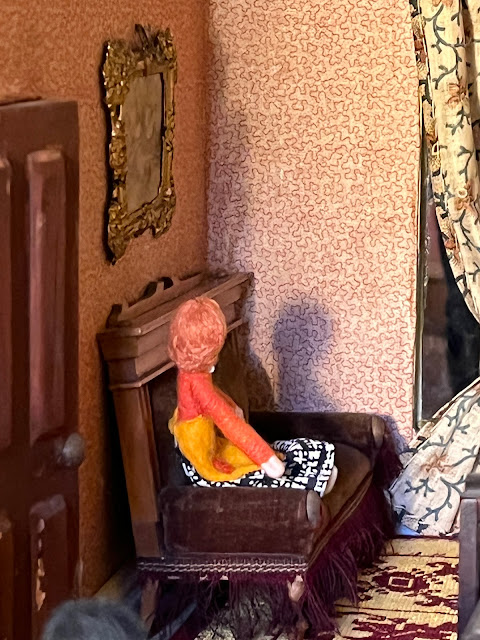Following on from my last post, I wanted to post these photos of the working lift in the Hammond House at Wallington.
Saturday, 29 October 2022
Hammond House Working Lift
A Good Look at Gladstone Lodge Dolls' House, Wallington
The National Trust owned stately home of Wallington in Northumberland houses a collection of eighteen lovely old dolls' houses, (including the huge and beautiful Hammond House), and my friend Jenny and I have spent many hours peering through tiny windows there.
So, when we visited again recently, you can imagine how pleased we were to find that this visit had a little something extra to enjoy. On entering the dolls' house room, we found that one of the houses had just been opened up and everything was set up ready to clean its tiny contents.
Apparently the dolls' houses will all be cleaned one by one over the coming months and, in line with the Trust's desire to engage with visitors and share information, the work is being done where the visiting public can see it.
The house being cleaned at the time of our visit was Gladstone Lodge, which is a house we had previously only viewed through its front windows, however, here it was with its opening back panels removed in readiness for cleaning.
Making our day, the friendly volunteer staff were more than happy to allow us to take a closer look at the house through the open back, and to take photos (without a flash of course) before they started to remove the furniture.
It was such a pleasure to be able to see the rooms in the house in their entirety and with plenty of light.
We were also able to watch as the volunteers removed some of the individual pieces of furniture and soft furnishings, and carefully cleaned them.
Here are the photos I took:
The Kitchen
The Dining Room
The rugs in the house are all beautifully hand-stitched.
Bedroom One
Bedroom Two
The Inhabitants
The 'Stained Glass' Window and Stair Carpet
With the back off the house, we were able to see a couple of extra details such as the 'stained glass' window at the back of the stair landing. With light behind it instead of a wall, it's clear that the pattern has been carefully hand-drawn onto the glass.
And looking though the 'stained glass' window from the back, we could see the lovely [silk?] ribbon used as a stair runner.
The cleaning Process
A very soft brush was being used for dusting and the soft furnishings were covered by a net before being gently vacuumed with a small, hand-held machine with net tied over the suction nozzle - presumably to ensure that none of the tinier items disappeared up it (we've all been there....!)












































